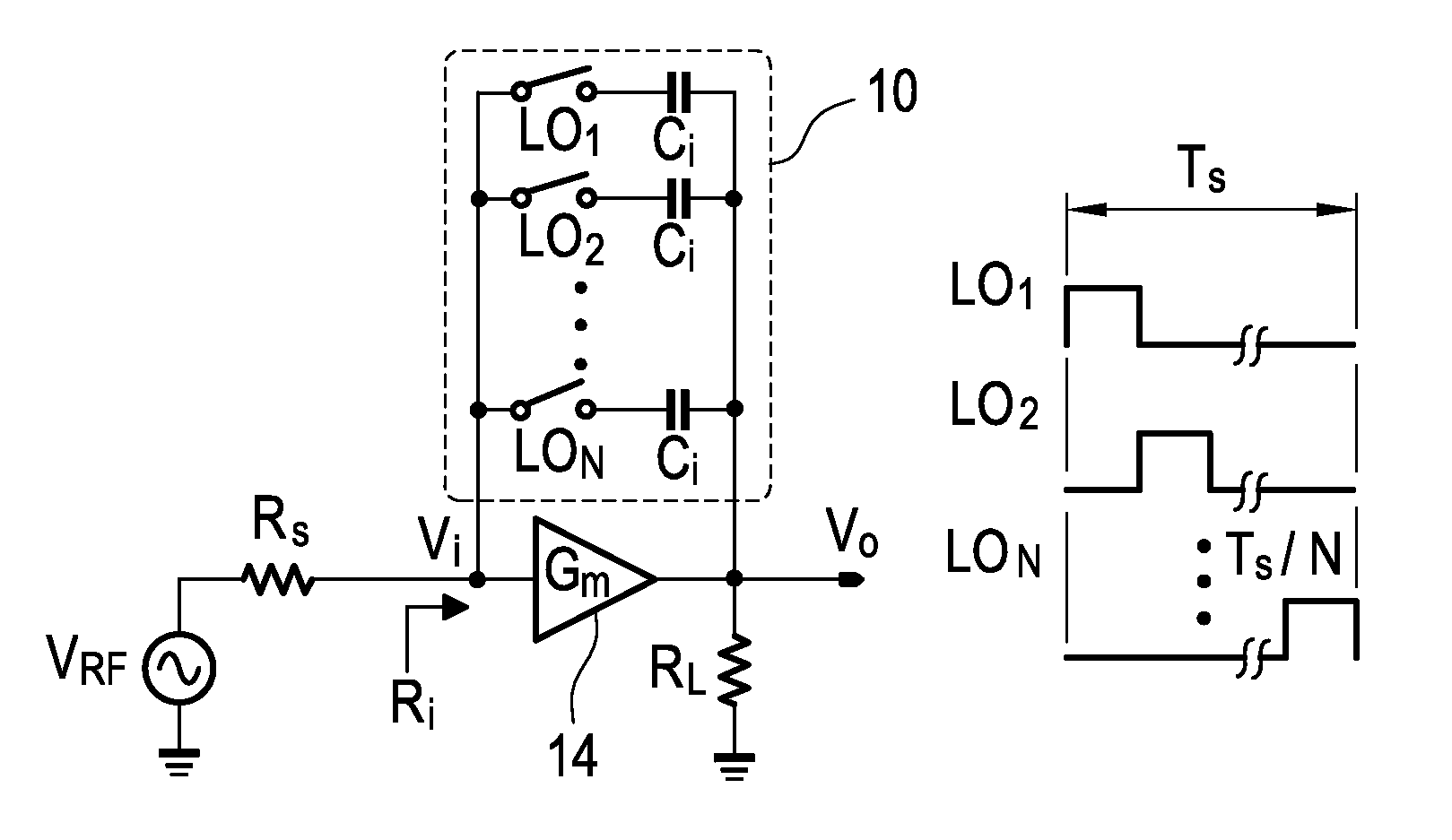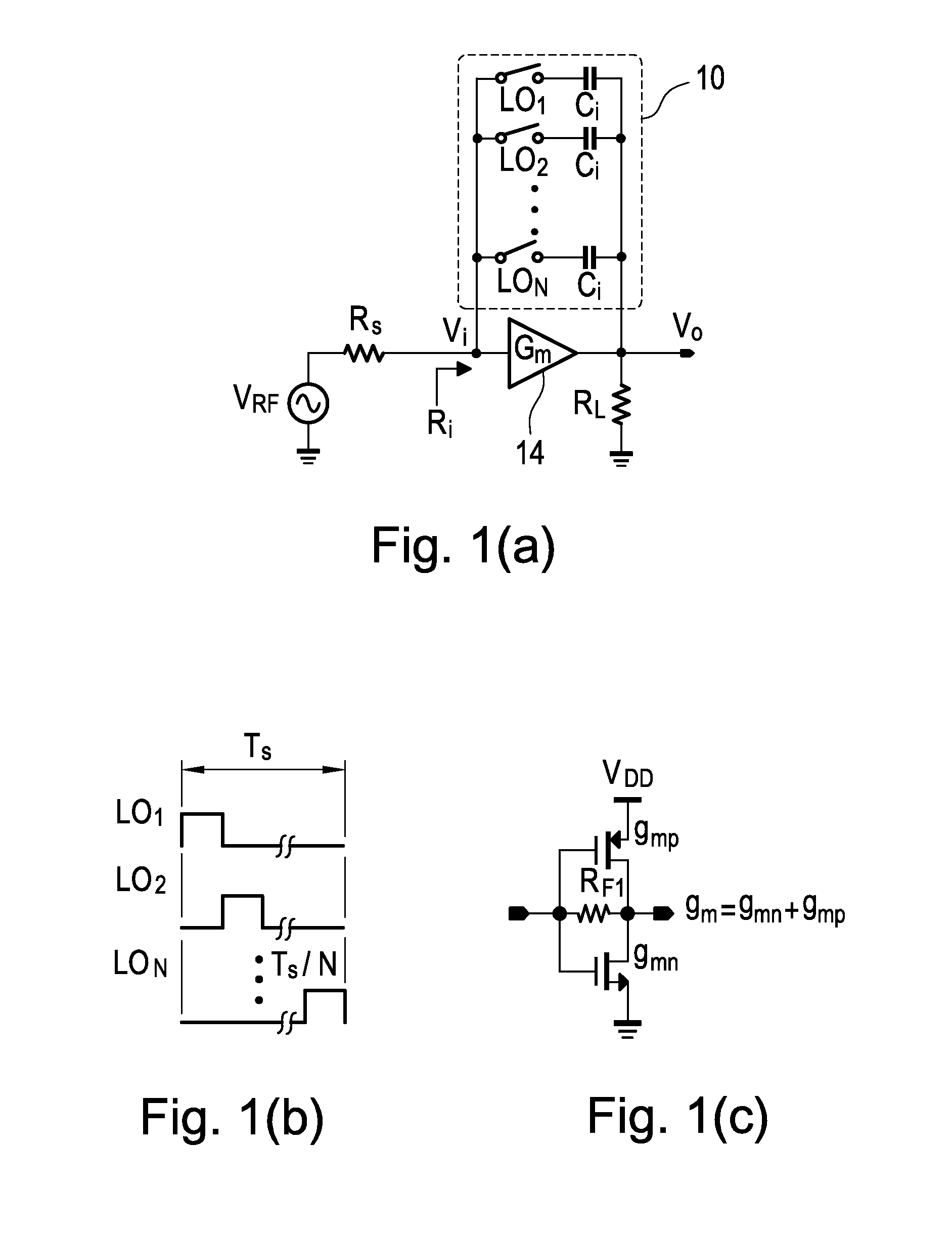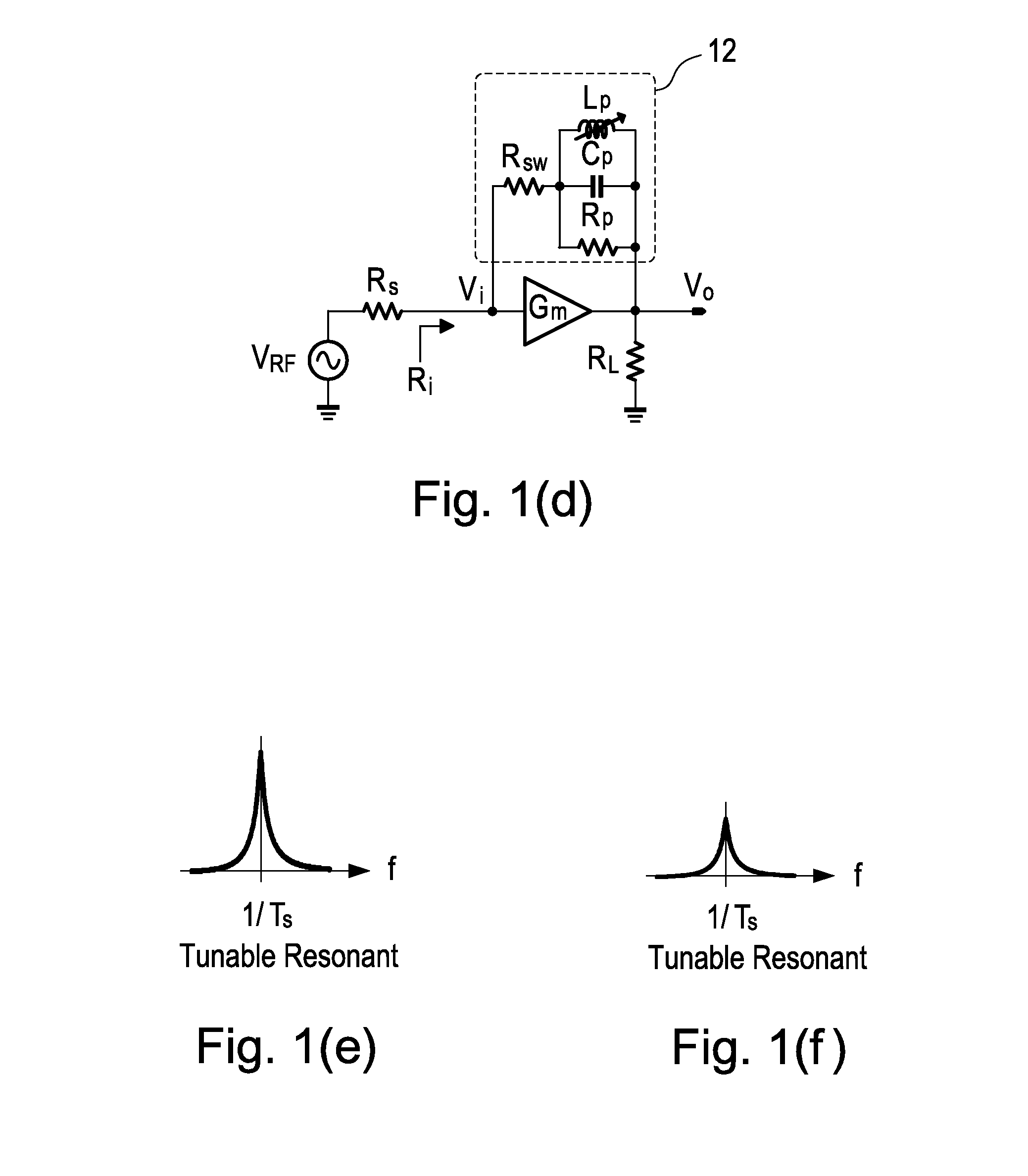Gain-boosted N-path bandpass filter
a bandpass filter and gain-boosting technology, applied in the field of bandpass filters, can solve the problems of unsolved area and power and area costs, and achieve the effect of small capacitors
- Summary
- Abstract
- Description
- Claims
- Application Information
AI Technical Summary
Benefits of technology
Problems solved by technology
Method used
Image
Examples
Embodiment Construction
I. GB-BPF using an Ideal RLC Model
[0050]The proposed GB-BPF is depicted in FIG. 1(a). It features a transconductance amplifier (Gm) 14 in the forward path, and an N-path SC branch 10 driven by an N-phase non-overlapped LO in the feedback path. When one of the switches is ON, an in-phase RF voltage VRF will appear on the top plate of capacitor Ci, and induces an amplified anti-phase voltage into its bottom plate. When the switch is OFF, the amplified version of VRF will be stored in Ci. There are three observations: 1) similar to the well-known capacitor-multiplying technique (i.e., Miller effect) in amplifiers, the effective capacitance of Ci at the input node Vi will be boosted by the loop gain created by Gm 14, while it is still Ci at the output node Vo. This feature, to be described later, reduces the required Ci when comparing it with the traditional passive N-path filter. 2) For the in-band signal, the voltages sampled at all Ci are in-phase summed at Vi and Vo after a complete...
PUM
 Login to View More
Login to View More Abstract
Description
Claims
Application Information
 Login to View More
Login to View More - R&D
- Intellectual Property
- Life Sciences
- Materials
- Tech Scout
- Unparalleled Data Quality
- Higher Quality Content
- 60% Fewer Hallucinations
Browse by: Latest US Patents, China's latest patents, Technical Efficacy Thesaurus, Application Domain, Technology Topic, Popular Technical Reports.
© 2025 PatSnap. All rights reserved.Legal|Privacy policy|Modern Slavery Act Transparency Statement|Sitemap|About US| Contact US: help@patsnap.com



